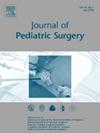Clinical Features and Surgical Procedures of Acquired Rectovestibular Fistula: A Single-center Retrospective Study
IF 2.4
2区 医学
Q1 PEDIATRICS
引用次数: 0
Abstract
Introduction
We reviewed a 7-year experience (Jan 2016 to Oct 2023) in diagnosing and surgically treating Acquired Rectovestibular Fistula (ARVF). Our study describes the medical history, introduces new classifications based on fistula features, and outlines the application of diverse surgical techniques in treating these patients.
Methods
A total of 78 girls with ARVF appeared asymptomatic at birth. Most patients experienced diarrhea or perineal inflammation within their first three months of life, followed by fistula formation and occasional fecal leakage and gas from the vestibule. The median age at surgery was 4 years (7 months–11 years). Fistulas were classified into four types based on diameter, location, and number, with corresponding surgical procedures: Type I (n = 52) underwent transrectal repair; Type II (n = 17) underwent transrectal fistulectomy and repair; Type III (n = 7) and Type IV (n = 2) underwent rectal-vestibular pull-through fistula excision or complete destruction, followed by transrectal repair.
Results
Primary healing occurred in 76 patients (97.4 %), with discharge occurring within 5–7 days postoperatively. Complications arose in 2 cases: one involved a Type IV fistula incision infection that resolved with daily sitz baths, and the other involved a Type III fistula recurrence that necessitated reoperation. All 78 patients had normal perineal appearance, with no incidences of urinary or fecal incontinence or anal stricture during the 2-month to 6-year follow-up period.
Conclusions
Choosing an appropriate surgical approach based on fistula classification for treating Acquired Rectovestibular Fistula (ARVF) leads to high success rates, low incidence of complications, and a favorable prognosis.
获得性直肠前庭瘘的临床特征和手术方法:一项单中心回顾性研究
我们回顾了7年(2016年1月至2023年10月)诊断和手术治疗获得性直肠前庭瘘(ARVF)的经验。我们的研究描述了病史,介绍了基于瘘管特征的新分类,并概述了不同手术技术在治疗这些患者中的应用。方法78例ARVF女童出生时无症状。大多数患者在出生后的前三个月内出现腹泻或会阴炎症,随后出现瘘管形成和偶尔的前庭粪便渗漏和气体。手术时中位年龄为4岁(7个月- 11岁)。根据瘘管的直径、位置和数量将其分为四种类型,并进行相应的手术:I型(n = 52)行经直肠修复;II型(n = 17)行经直肠瘘管切除术和修复;III型(n = 7)和IV型(n = 2)采用直肠前庭牵引,通过瘘管切除或完全破坏,然后经直肠修复。结果76例(97.4%)患者术后初愈,术后5 ~ 7天出院。2例出现并发症:1例为IV型瘘管切口感染,每日坐浴解决,另1例为III型瘘管复发,需要再次手术。78例患者会阴外观正常,随访2个月至6年无尿失禁、大便失禁、肛门狭窄发生。结论根据瘘管分类选择合适的手术入路治疗获得性直肠前庭瘘(Acquired Rectovestibular瘘,ARVF)成功率高,并发症发生率低,预后良好。
本文章由计算机程序翻译,如有差异,请以英文原文为准。
求助全文
约1分钟内获得全文
求助全文
来源期刊
CiteScore
1.10
自引率
12.50%
发文量
569
审稿时长
38 days
期刊介绍:
The journal presents original contributions as well as a complete international abstracts section and other special departments to provide the most current source of information and references in pediatric surgery. The journal is based on the need to improve the surgical care of infants and children, not only through advances in physiology, pathology and surgical techniques, but also by attention to the unique emotional and physical needs of the young patient.

 求助内容:
求助内容: 应助结果提醒方式:
应助结果提醒方式:


